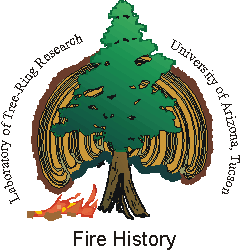- Current fire behavior
What is the current pattern of forest fires?
Click here to learn about current
patterns of fire frequency and behavior.
- Past fire patterns
What is the past pattern of forest fires?
Click here to learn about past
patterns of fire frequency and behavior, as told from the
dendrochronological (tree-ring) record.
- Overview
How and why have forest fires changed through time?
Click here to learn about how fire
occurrence and behavior in Southwest forests have changed during
the past 100+ years.
- Prescribed fire
One management option is to start fires on
purpose and/or allow natural fires to burn without suppression.
Click here to learn about prescribed fire
management.
- What about the smoke?
Any management strategy using fire to fight
fire must consider the issue of smoke. How to mitigate the smoke of wildland
fires? Click here to learn about the smoke
issue that clouds fire management.
- Mechanical Thinning
Other ways to reduce fuel loads include cutting
out trees and undergrowth. Click here to learn of ways to
mechanically reduce the forest fuel buildup.
- Communities doing something
Forest communities of the Southwest, and
the West generally, are taking action to improve forest health by reducing fuel loading
and re-introducing fire into nearby forests. Click here
for examples.
Geosciences 220 writing assignment: Click here
for specific instructions to the Geosciences 220 writing assignment.
|

